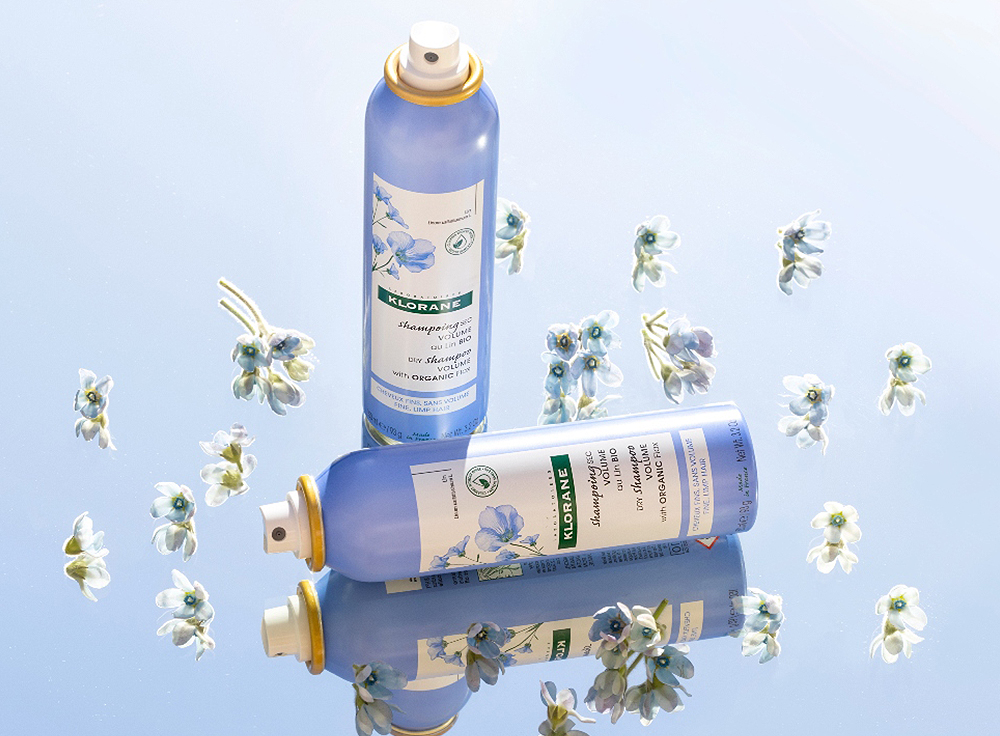[ad_1]
Though there’s still not—and probably never will be—one clear-cut definition of “clean” when it comes to beauty and personal-care products, there are several things the experts agree on that consumers should be on the lookout for when shopping for “clean beauty.” Here’s what to know.
“Clean beauty is still beauty—it’s supposed to be fun,” says Elena Severin, senior director of merchandising for The Detox Market. “You don’t have to swap all of your favorite products all at once. Pick five products. I tell people to start with mascara, deodorant, body moisturizer, lipstick, and one face product. Once you’ve found those swaps, move on to the next five. It’s really rewarding to find that perfect clean swap for a product that you have been convinced will be impossible to replace. There are so many beautiful clean beauty brands to choose from!”
1. Easy-to-Read Ingredient Labels
Table of Contents
Rose-Marie Swift, founder of RMS Beauty, says “clean” is the term that started it all, but this is another unregulated word that can be used to market products that aren’t at all clean. “Normally, a product that is labeled as clean will be a product that doesn’t contain known toxins, and instead, contains ingredients that are naturally derived wherever possible.”
“Consumers should look for easy-to-read ingredient labeling that clearly states which ingredients are included in the formula,” says SpaRitual founder Shel Pink. “At SpaRitual, we intentionally enlarge the ingredient list on the body-care packaging to make it easier to read, and we include a legend to call out which ingredients are fair-trade, certified-organic, etc.”
Sheena Yaitanes, founder of Kosas, thinks the most effective way to approach clean beauty is to get familiar with ingredients, find out what works or doesn’t work with your skin, and then go directly to the ingredient lists on the back of every product. “Think of it like food,” she says. “Some people are looking for gluten-free, some for sugar-free, etc. It’s all a matter of what works with your body and makes you feel good. It’s very personal.”
2. “Free of” Lists
A list of what the product does not contain is equally as important in the “clean” world. “Look for ‘free of’ statements on the product packaging, which will inform you what is NOT included in the products, such as parabens, petrochemicals, synthetic dyes, synthetic fragrances, GMOs, etc,” Pink explains.
Severin says it’s easiest to start small when educating yourself about clean beauty ingredients. “Start with five to 10 ingredients that are the same on every clean beauty retailer and organizations lists and work your way up. Aluminum chlorohydrate, BHT, carbon black, hydroquinone, lead, mercury and mercury compounds, parabens, phthalates, sodium lauryl sulfate, sodium laureth sulfate, toluene, and triclosan are a good place to start. Carry a cheat sheet from trusted clean beauty retailers when you shop, and after awhile you won’t need to look at the sheet anymore—you’ll just know it.” The Detox Market’s Banned Ingredient List outlines ingredients we do not allow on our shelves.”
When shopping for makeup specifically, Swift, recommends looking for products that contain ingredients that are certified-organic, raw, unprocessed/unrefined, sustainable, naturally derived, living, cruelty-free and nontoxic.

3. Seals and Certifications
“Specific organizations and their seals to look for include The Vegan Society, the internationally recognized Ecocert and COSMOS certifications, USDA Certified Organic, Leaping Bunny, Fair-Trade, FSC-Certified, Rain Forest Alliance, and the newer Regenerative Organic Certification,” Pink explains. “All of these organizations and the seals they award after a thorough auditing process hold value based on their thoughtful and high rigorous standards of safety for people and the planet. These organizations play a legitimate and vital role in environmental and labor activism through the beauty and personal-care product industries.” Other noteworthy seals include Made Safe and The Good Face Project Approved.
“While not limited to clean beauty, I always smile and admire a brand that gets its Certified B Corp status,” adds Severin. “All of these seals are not easy to get and require much due diligence and commitment to ingredients standards, ethical treatment and ecological commitments.”
Christina Ross, senior scientist at Credo Beauty, points to Environmental Working Group (EWG) Verified as another third-party certification to look out for, which verifies the product is free from EWG’s chemicals of concern. “Also look for Non-GMO to verify the product is made without genetically modified ingredients, and of course, the Credo Clean Standard. Every brand we sell needs to meet this high bar that addresses both product safety and sustainability concerns.”
“Organic” labeling differs on skin care versus makeup, Swift explains, due to government agency guidelines. “The USDA regulates organically grown products in the U.S., and the FDA regulates the safety and package labeling of makeup and beauty products,” she says. “Together, these two agencies determine which products can include ‘organic’ on their label, and no makeup product can ever truly be 100-percent organic. Although makeup products cannot be certified-organic by the USDA, their use of the term ‘organic’ is regulated through the USDA’s National Organic Program (NOP) and governed by the product labeling requirements of the FDA.”
Yaitanes adds that although these seals and certifications hold value, consumers shouldn’t always rely on them entirely. “A lot of seals and special designations are very expensive to get, so you may end up missing out on great products that couldn’t afford to get them. I like to find retailers who are passionate about ingredients and who you can trust to do the vetting for you.”
4. Clear Expiration Dates
“Expiration dates should be clearly labeled for all clean products, but not all products need a short shelf life,” Severin says. “Products that do not contain water—think face oils and powder formulations—generally do not require a heavy preservative system to keep the formulation fresh longer. However, any cream formulation, serum or liquid that contains water as an ingredient does need a bit more powerful of a preservative system in place or bacteria can overtake the product pretty quickly. There are many safe-synthetic and natural preservatives that can provide two-plus years of shelf life for an unopened product.”
Look for the little open-jar symbol with a number on top printed on the package when you purchase a product (it’s usually on the bottom and the little number will be either 6, 12, 24, or 36). “That number will guide you on how many months you have for maximum freshness once the product is opened,” adds Severin. “One thing to keep in mind though, is that the more air, hands and outside touches that come in contact with a product will start diminishing the shelf life of any product.”
However, if your cosmetic product doesn’t have an expiration date or period-after-opening date (PAO) listed on the packaging, Ross advises taking notice if the product has changed color, odor or consistency, or has separated. “And with any product, make sure you’re properly storing it away from heat and light—like in a cabinet or drawer—and clean your hands prior to using products you regularly touch, like lotion jars.”
Swift adds that “cosmetics using cleaner ingredients do have a shorter shelf date, but while this is unfortunate, it means you’re using products that have safe, natural ingredients that work synergistically with your skin. We compare this to food. Would you want a salad that has been sitting around for two weeks? You ideally want to use the product at its height of its healing properties, so it goes without saying the fresher the ingredients, airtight containers, and the proper preservation system speaks volumes.”
5. Commonly Misunderstood Buzzwords
“One very important thing to point out is that clean beauty does not have to mean 100-percent natural,” says Severin. “There are many natural ingredients—think lead and mercury—that are not safe, and many safe-synthetics that are. We believe that clean beauty should equal safe, transparent and ethical beauty.”
6. Sustainability Efforts
“I suggest that consumers focus on brands and retailers that have done their due diligence,” says Ross. “This means that they show they are vetting ingredients for potential safety concerns, ensuring safe manufacturing processes, seeking ethical ingredient sources for materials, prioritizing sustainable packaging, and giving back to their communities. Some things to look for: ingredients that are certified organic, packaging that is made with recycled content and minimally designed, meaning not too heavy and no huge caps or metalized parts that use too much material and cannot be recycled.”
7. Greenwashing
Be mindful of greenwashing, which is when a brand claims to be eco-conscious for marketing purposes and to sell products, but it isn’t actually contributing to sustainability efforts. This is also called clean washing or transparency washing, and Ross says it happens far too often. “At Credo, we are committed to working with our brand partners to increase transparency in our industry, and to back up claims. Also, your consumer voice matters. Don’t be shy to reach out to brands and retailers to say what you’re looking and what matters to you in your beauty and personal-care products.”

Find a Doctor
Find a NewBeauty “Top Beauty Doctor” Near you




